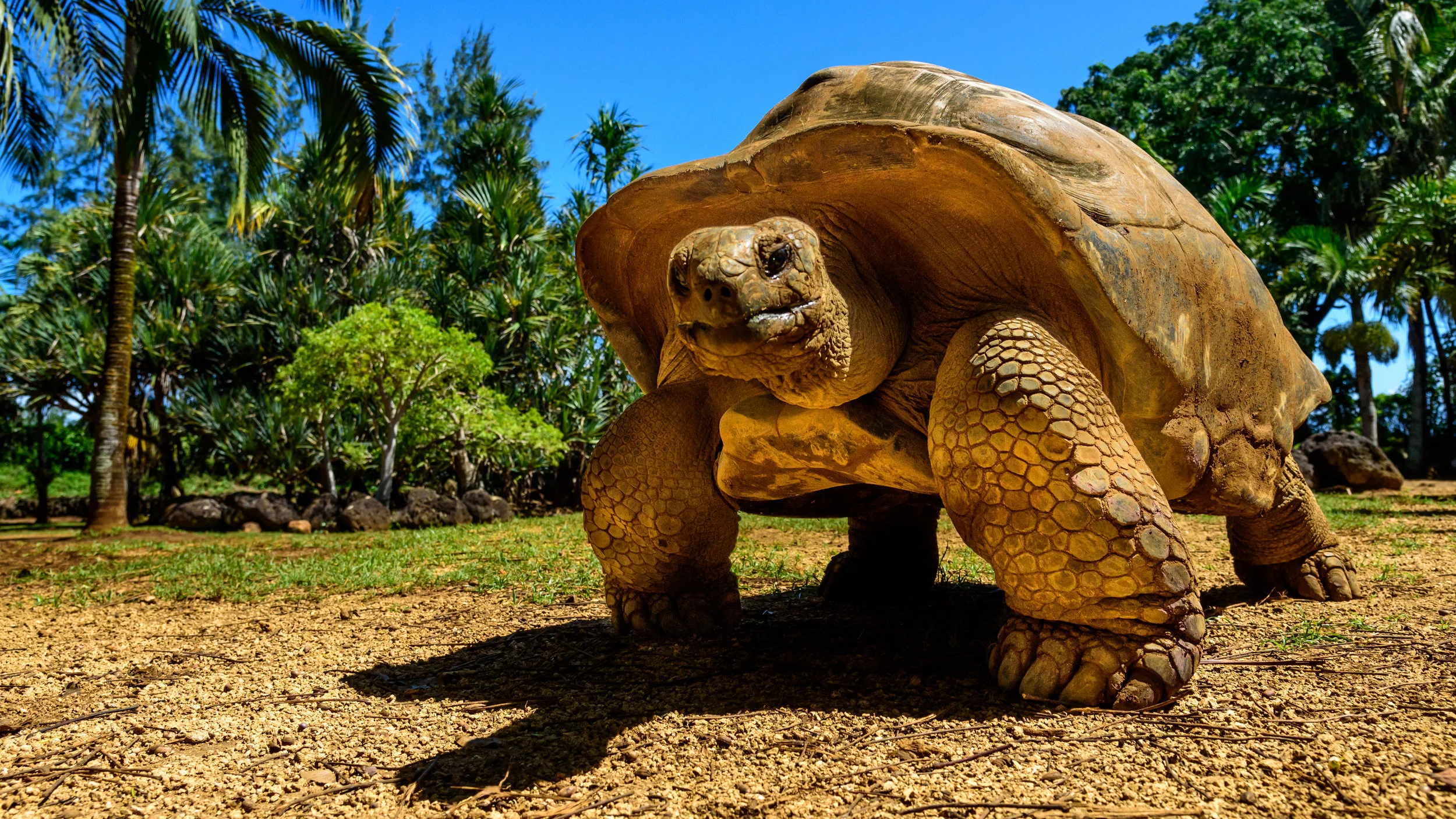Giant Tortoise
"Giant Tortoises at Dusk" by Justin Kaufman (digital)
“I got my first tortoise when I was three, and ever since have always been fascinated by them. They have SO much personality and their curiosity about the world makes them fun to observe. We currently have a yellow foot in an indoor enclosure and a giant sulcata out in our yard. Given their lifespan, both myself and the kids will likely be tortoise keepers for life! :)”
Your purchase is helping Expedition Art and Saving Species purchase land in Sumatra! Learn more about the project.
Habitat
The most commonly recognized giant tortoises live in the Galapagos Islands off of the coast of Central America. There is another population called the Aldabra giant tortoise that can be found in the Seychelles, Madagascar and Tanzania, and has been introduced on the island of Mauritius. They prefer areas with dense vegetation, but can live in a wide range of altitudes based on the topography and availability of vegetation on the island on which they are found.
Family life
Giant tortoises are cold-blooded, so they spend the majority of their day in the sun and prefer to submerge themselves, as least partially, in mud, water or other vegetation as temperatures cool during the night. They move slowly, walking an average of one kilometer every three and a half hours. They become sexually mature around 20 years of age. Mothers do not care for their young; after an average of 10 eggs incubates between three to eight months, hatched babies must fend for themselves.
Lifespan
The average giant tortoise has a life expectancy of 100-150 years.
Hunting Habits/Diet
The giant tortoise is an herbivore. It eats mostly leaves and grasses but their diet depends largely on the particular subspecies due to the diversity of vegetation on their particular island. Tortoises are remarkably adapted to store nutrients and water and are able to subsist without drinking or eating for a full year.
Population
The genetic makeup of the variety of giant tortoise subspecies is diverse enough for them to be considered completely different species, several having already gone extinct. Seychelles giant tortoises are classified as Vulnerable, while all of the Galapagos giant tortoise species except one are considered either Endangered or Critically Endangered.
Fun Fact
Giant tortoises can survive for long periods with little food or water, even up to one year. They are the largest living tortoise in the world.
Why are They Endangered?
The most substantial threat to the survival of the giant tortoise comes from introduced species, though human exploitation was also responsible for the reduction, and in some cases extinction, of certain populations. Young tortoises are particularly vulnerable to predation by introduced species such as dogs, cats and rats. Established tortoises are forced to compete with livestock for vegetation. Historically, they were killed by mariners and used as meat for long ship voyages.
Status
Vulnerable


